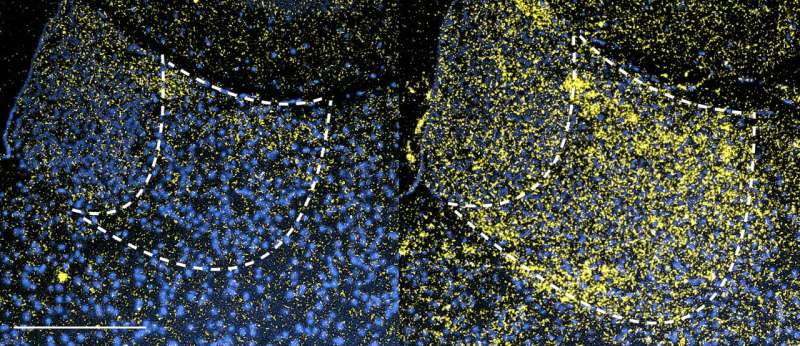Scientists show how light therapy treats depression in mice model

Light therapy can help improve the mood of people with seasonal affective disorder (SAD) during short winter days, but exactly how this therapy works is not well understood. A new study by Urs Albrecht at the University of Fribourg, published July 8th in the journal PLOS Genetics, finds that light therapy's beneficial effects come from activating the circadian clock gene Period1 in a part of the brain involved in mood and sleep-wake cycles.
Nighttime light has strong effects on the physiology and behavior of mammals. It can reset an animal's circadian rhythms, and in the form of light therapy, affect mood in humans. Albrecht and his colleagues investigated how nighttime light impacts mood using mice as a model. They exposed mice to a pulse of light at different points during the night and then tested them for depressive behavior. The researchers discovered that light exposure at the end of the dark period—two hours before daytime—had an antidepressant effect on the animals. The pulse of light activated the Period1 gene in a brain region called the lateral habenula, which plays a role in mood. Light at other times, however, had no effect. When they deleted the Period1 gene, the mice no longer experienced the light's beneficial effects.
The new results provide evidence that turning on Period1 in the lateral habenula is the key to light's mood-boosting powers. The discovery that mice appeared to be less depressed when exposed to light at the end of the dark period than the beginning is similar to findings in humans. Light therapy is more efficient in the early morning than in the evening for patients with SAD. However, the researchers caution against making too many direct comparisons to humans since mice are nocturnal animals.
The researchers add, "Light perceived in the late part of the night induces expression of the clock gene Per1, which is related to improvement of depression like behavior in mice."
More information: Olejniczak I, Ripperger JA, Sandrelli F, Schnell A, Mansencal-Strittmatter L, Wendrich K, et al. (2021) Light affects behavioral despair involving the clock gene Period 1. PLoS Genet 17(7): e1009625. doi.org/10.1371/journal.pgen.1009625





















